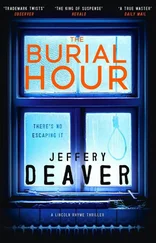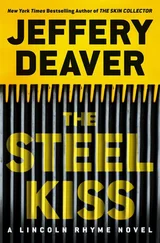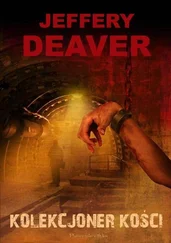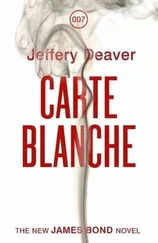A brick from the Wall. All the weight, heft, and consequence a panel of skittish judges could ask for.
The carefully bagged brick is between us now, as we wind our way back down out of the Hollywood Hills.
In the celebratory chaos of that Berlin night, wouldn’t it be easy for Corporal Miller to simply dispose of it? Drop it in a river or stream? Leave it by the side of a road in the dust and rain? Crush it into pieces, bury it in one of the growing piles of Berlin wall rubble? Yes, he is a risk taker, with a risk taker’s personality, but doesn’t this go foolishly beyond that?
“Why ship it?” I ask. “Why take the chance?”
Grimmenkauf narrows his blue eyes. And the old Stasi—lifelong student of, and witness to, human behavior under duress—smiles thinly, and soon shows he has given up none of his acuity. A limp, yes—but he has not lost a step.
“Panic, Herr Bunder. Panic shipped in a cardboard box.” His steely blue eyes stare out, unblinking. And then, more quietly: “It is one thing to be a cool, confident young entrepreneur. Party drugs, contraband, fancy watches, exotic pelts—sure, why not? But when you kill someone?” His blue eyes squint. “You suddenly enter a new terrain. You cross a border,” he says, pausing, looking at me, and speaking, I realize, from a place very distant from this California sunshine. “And when you first cross this border, everything changes. You are no longer cool and confident. You don’t think clearly. You miscalculate. Make poor judgments. You have fuzzy, childish thoughts—get the bad object as far away as possible, as fast as possible.” Now he looks away. “A twenty-year-old kid who murders someone, someone close, in cold blood? Trust me—you are shaken. You are no longer the same.”
Trust me. You are no longer the same. And I see that Grimmenkauf is speaking from that same far side of the border. From the dark side of that wall.
“For that brick to end up in some unknown wealthy American home—the ultimate hiding place, you think, yes? Forever anonymous among the other bricks. But that is the West German way to see it—a brilliant, inspired twist of commerce. Now look at it the East German way—a desperate act, terrified and impulsive, and in the end, futile.” He turns back to me, blue eyes swimming. “So which is it, Herr Bunder?”
Brilliant? Or desperate? But the verdict is already in. Miller is caught. Grimmenkauf is right.
Smiling a little now, feeling expansive, suddenly enjoying California, the sunshine on his pale craggy face, Grimmenkauf settles back in the passenger seat, and sums it up for himself. “In a panic, Colonel Miller resorted to capitalism,” he says. “But capitalism, Herr Bunder, can’t solve all life’s problems.” A pause. A chuckle. “Especially murder.”
His worldview confirmed—and basking in a rare, brief moment of justice and order—my partner Alexander Grimmenkauf turns his pale face to the passenger window, and rolls it down for one last blast of California sun and air.
But East will never meet West.
SHOW STOPPER
BY GIGI VERNON
The dress had a recklessly full skirt, nearly eight meters of hand-painted silk, and was the most capitalistically decadent garment Ludmila Blatova had ever designed. Every time she set needle or shears to it, a shock, a combination of adoration and apprehension, rippled along her spine and tightened her abdomen. She still couldn’t believe the dress was permitted. But Khrushchev himself had directed that no expense or extravagance was to be spared for the 1959 Soviet Exhibition of Science, Technology, and Culture in New York City. There, the USSR’s superiority would be demonstrated in every aspect of life, from Sputnik to rugs. They’d already beaten the Americans in the race to outer space. But they’d always lagged behind in fashion. Until now. The clothes shown in New York would epitomize the socialist aesthetic—simple, modest, and functional. Even Westerners would want them.
Ludmila was one of four designers brought to the center of Soviet fashion, the Moscow ODMO, the All-Union House of Prototypes, but she was the only one plucked from a provincial garment factory. The others came from GUM, the state-sponsored department store. For months, all of them had worked long hours on the collection of daywear and evening gowns that would represent the Soviet Union in New York. None of them complained. To handle such luxurious materials and patterns was a dream. And a nightmare. One misstep or accident—a clumsy drape or silhouette, the wrong length, crooked or puckered seams, a smear of blood from a pricked finger on a priceless textile—might mean a Siberian gulag, or so Ludmila feared.
They were to be steered clear of such disasters through the close supervision of a senior ODMO designer, Vladlena Gribkova. Not only was her father a high-ranking Party member and Deputy Commissar of the Ministry of Light Production, but also she’d had the benefit of visiting Paris, twice. Her advantages showed in the brilliance of her work. Every design in the collection showed her creative stamp. Ludmila was as jealous of her position and spotless pedigree as of her talent.
Ludmila was the only designer allowed to contribute an entirely original dress to the collection, an honor which both thrilled and terrified her. As she feverishly worked, nausea alternated with light-headedness. She could scarcely sleep and had no interest in food. The only hunger she felt was for the chance to realize more of her ideas. She hoped her cherished dress was just the beginning of a dazzling career. If she could impress Gribkova, Ludmila might gain a permanent position at ODMO, advance, and maybe, one day, become senior designer herself. She tried her best to win over Gribkova, but the senior designer rebuffed all attempts with chilly resentment and mistrust, or so it seemed to Ludmila.
“Is it finished?” Gribkova asked, standing over Ludmila.
All afternoon Ludmila had labored over the skirt’s hem, which required thousands of tiny invisible stitches. “Another minute or two.” She didn’t look up and kept sewing, hoping the anxious tremble of her fingers escaped the senior designer’s scrutiny.
The only soft thing about Gribkova was her generous curves. Everything else was cold and sharp—her voice, demeanor, and scathing criticism, her elegant spiked heels and cat-eye glasses. She was tireless and seemed to see and hear everything. No one dared pilfer fabric scraps or extra buttons, or indulge in anticommunist jokes.
Out of the corner of her eye, Ludmila saw the pointed toe of Gribkova’s black pump impatiently tapping the floor. Ludmila had been so proud of her own new flat sandals from Poland, which she’d procured after standing in line for hours. Now, compared to Gribkova, the shoes made her feel as sturdy and practical as her homemade button-down dress.
At last, Ludmila made the final stitch, cut the thread, and handed Gribkova the skirt for her inspection. “There. Done.”
Gribkova took it, her lips pursed, ready to disapprove. Holding it up to the light, she examined it centimeter by centimeter. When she’d finished, she called, “Inessa.”
Inessa was the model assigned to the dress. A twenty-two-year-old redhead. She and the other models lounged in their underwear around a scarred wooden table in a corner of the workroom, smoking, gossiping, and turning dog-eared pages of Zhurnal mod and Modelt zesona , while they waited to be fitted. At her name, Inessa stood and melodramatically threw off a blanket draped around her shoulders. “Yes, Comrade Gribkova,” she said, hiding a giggle behind her hand. She was always giggling. Tall and stick-thin, her best feature was her almond-shaped eyes and long eyelashes. From certain angles, she might have looked like a giraffe, but on the runway she walked like a goddess.
Читать дальше












